Click on the image to zoom
Planispheric astrolabe
- Accession Number:AKM611
- Place:Spain, Toledo (probably)
- Dimensions:13.5 cm
- Date:14th century
- Materials and Technique:bronze, engraved and inlaid with silver
-
This object is included in the following tour(s):
Stop #2 of Audio Guide: DiversityClick below to listen
Next up in the Diversity Tour:
More About Planispheric astrolabe
This little object made of bronze and silver—heavy in the hand and cool to the touch—speaks of a dynamic time in Spain’s history, when many advances in art, science, and mathematics were made. It is an astrolabe, used for finding the positions of stars and planets in the heavens in order to determine the time of day in a particular location. First developed by the ancient Greeks, the astrolabe was refined and improved by scientists working in medieval Islamic lands. Its primary function in Islamic societies was to find the times for daily prayer. By rotating the movable parts that indicate the relative positions of heavenly bodies, the user can determine exact times and distances on earth. It is also a fine example of the art of metalworking. This particular instrument is unusual among other astrolabes of the period due to the inscriptions on its surface in three languages: Latin, Arabic, and Hebrew. The presence of these three scripts reflects the social and cultural diversity of al-Andalus, medieval Muslim-ruled Spain.
Further Reading
The study of the heavens is as old as humanity. Learning and predicting the movements of the stars and planets may have afforded a sense of control to people who otherwise considered themselves at the mercy of the elements. Ancient civilizations in the Indus Valley and Mesopotamia have both left material evidence of using the observation of the heavens to make calendars.[1]
The word “astrolabe” and the Arabic word asturlab are derived from the Greek term astrolabon for “star taker.”[2] The instrument has been called many names, some of them quite poetic: the polymath medieval scholar Al-Biruni identified it as a Greek instrument, calling it “mirror of the stars” and “taker of the stars.”[3] These epithets imply a certain mastery over the skies by being able to read them. Just as the ancient Greeks inherited Indian and Babylonian knowledge and developed it further, scientists and philosophers in Muslim-ruled societies took Greek and Indian scientific discoveries and carried them forward. This activity was enabled by the Translation Movement, starting in the 8th century in Baghdad, which saved ancient knowledge in philosophy and science.[4]
The astrolabe is a two-dimensional model of the three-dimensional celestial sphere as seen from earth. Although the astrolabe had a range of functions in the societies that used it, its primary purpose in medieval Islamic societies was to ascertain the times for prayer.[5] Contemporary humans are surrounded by devices that inform us of the time of day; however, before mechanical clocks were in widespread use around the 17th century, the time was measured in unequal hours no matter how long or short the day or night actually were, and it was difficult to establish consistent prayer times. Each planispheric astrolabe—the most common type—has a series of plates showing the sky at a specific time and place. The four plates of this instrument are for Mecca, Jerusalem, Algiers, and Reims, France.
This astrolabe was fashioned in Spain, probably in Toledo. For three hundred years, from 711 to 1085, Toledo was an important centre of astronomy.[6] It was also a centre of what has been called the “convivencia,” the time in Spain when Muslims, Jews and Christians lived together and got along without living in a constant state of opposition and war. From the inscriptions on the plates we can identify three makers. This first maker added the Latin inscriptions, so he was probably Christian, and most certainly an expert astrolabe maker and engraver.[7] A Spanish Arab named Mas’ud added the Arabic inscriptions. He would have been living in Christian-ruled Spain as a mudejar, a Muslim who remained in Spain, but perhaps he planned to flee to Algeria, which is why he added the plate for Algiers.[8] The Hebrew writing appears on three of the four plates: their latitudes are scratched on the rim in Hebrew characters.
— Patricia Bentley
Notes
1. Syed Mohammad Ashfaque, "Astronomy in the Indus Valley Civilization: A Survey of the Problems and Possibilities of the Ancient Indian Astronomy and Cosmology in the Light of Indus Script Decipherment by the Finnish Scholars," Centaurus, vol. 21, no. 2, June 1977, 175.
2. David A. King, In Synchrony with the Heavens: Studies in Astronomical Timekeeping and Instrumentation in Medieval Islamic Civilization. Vol. 2 (Leiden: Brill, 2004), 583; Harold N. Saunders, All the Astrolabes (Oxford: Senecio, 1984), 2.
3. King, 591.
4. Dimitri Gutas, Greek Thought, Arab Culture: The Graeco-Arabic Translation Movement in Baghdad and Early ʻAbbāsid Society (2nd-4th/8th-10th C.) (London: Routledge, 1998), 11–24.
5. Henry S. Kim et al., Aga Khan Museum Guide (Toronto, ON: Aga Khan Museum, 2014), 78.
6. Sir Roland Jackson, 1001 Inventions: Muslim Heritage in Our World. Ed. Salim T. S. Al-Hassani, 2nd ed., (Manchester: Foundation for Science, Technology, and Civilization, 2011), 282.
7. King, 900.
8. King, 853.
References
Ashfaque, Syed Mohammad. "Astronomy in the Indus Valley Civilization: A Survey of the Problems and Possibilities of the Ancient Indian Astronomy and Cosmology in the Light of Indus Script Decipherment by the Finnish Scholars." Centaurus, vol. 21, no. 2, June 1977, 149–93. Wiley Online Library, doi:10.1111/j.1600-0498.1977.tb00351.x.
Gutas, Dimitri. Greek Thought, Arab Culture: The Graeco-Arabic Translation Movement in Baghdad and Early ʻAbbāsid Society (2nd-4th/8th-10th C.). London: Routledge, 1998. ISBN: 978041506133
Jackson, Sir Roland. 1001 Inventions: Muslim Heritage in Our World. Edited by Salim T. S. Al-Hassani, 2nd ed., Manchester: Foundation for Science, Technology, and Civilization, 2011. ISBN: 9780955242618
Kim, Henry S., et al. Aga Khan Museum Guide. Toronto, ON: Aga Khan Museum, 2014. ISBN: 9780991992867
King, David A. In Synchrony with the Heavens: Studies in Astronomical Timekeeping and Instrumentation in Medieval Islamic Civilization. Vol. 2, Leiden: Brill, 2004. ISBN: 9781429453646
Saunders, Harold N. All the Astrolabes. Oxford: Senecio, 1984. ISBN: 9780906831045
Note: This online resource is reviewed and updated on an ongoing basis. We are committed to improving this information and will revise and update knowledge about this object as it becomes available.





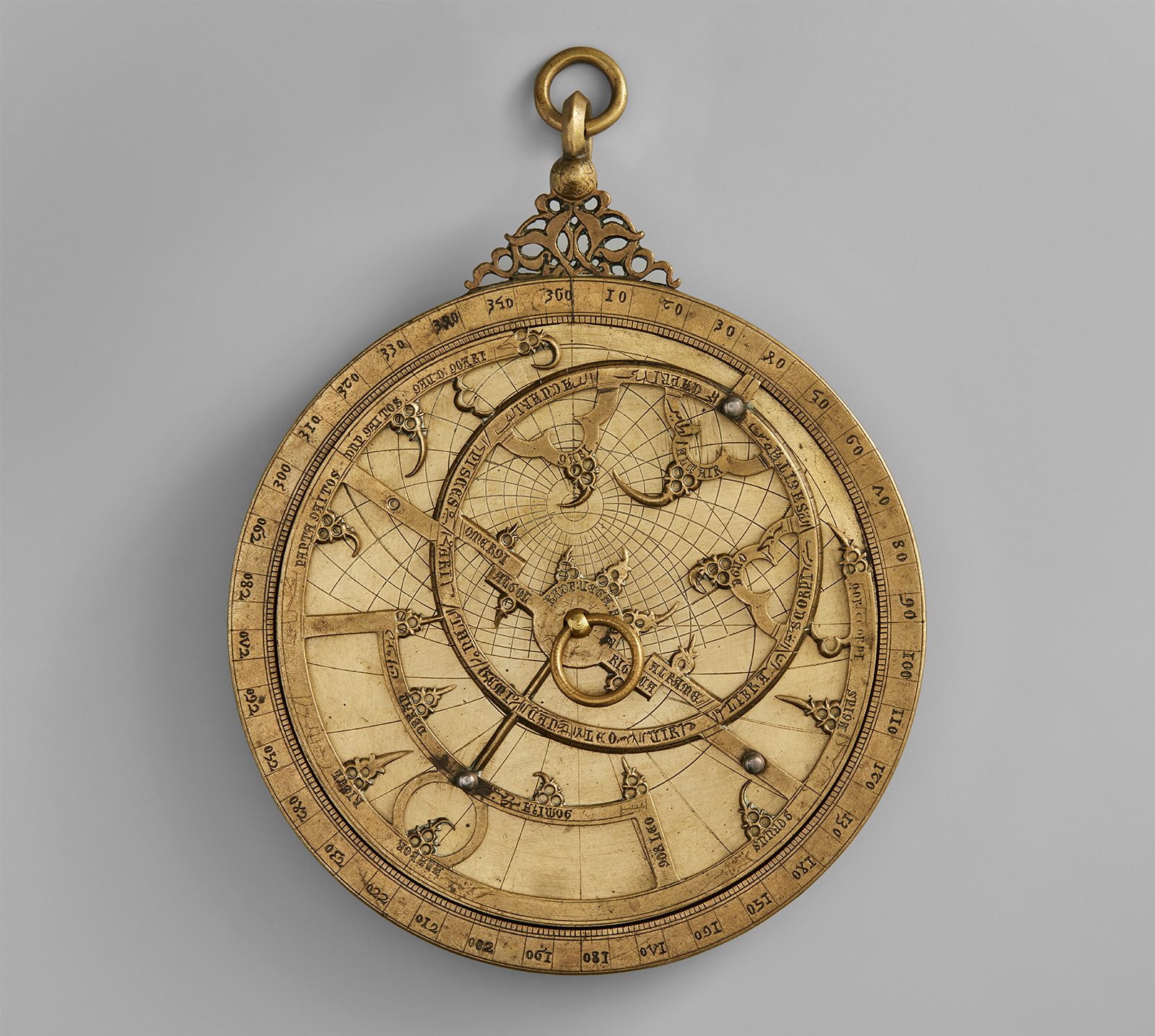
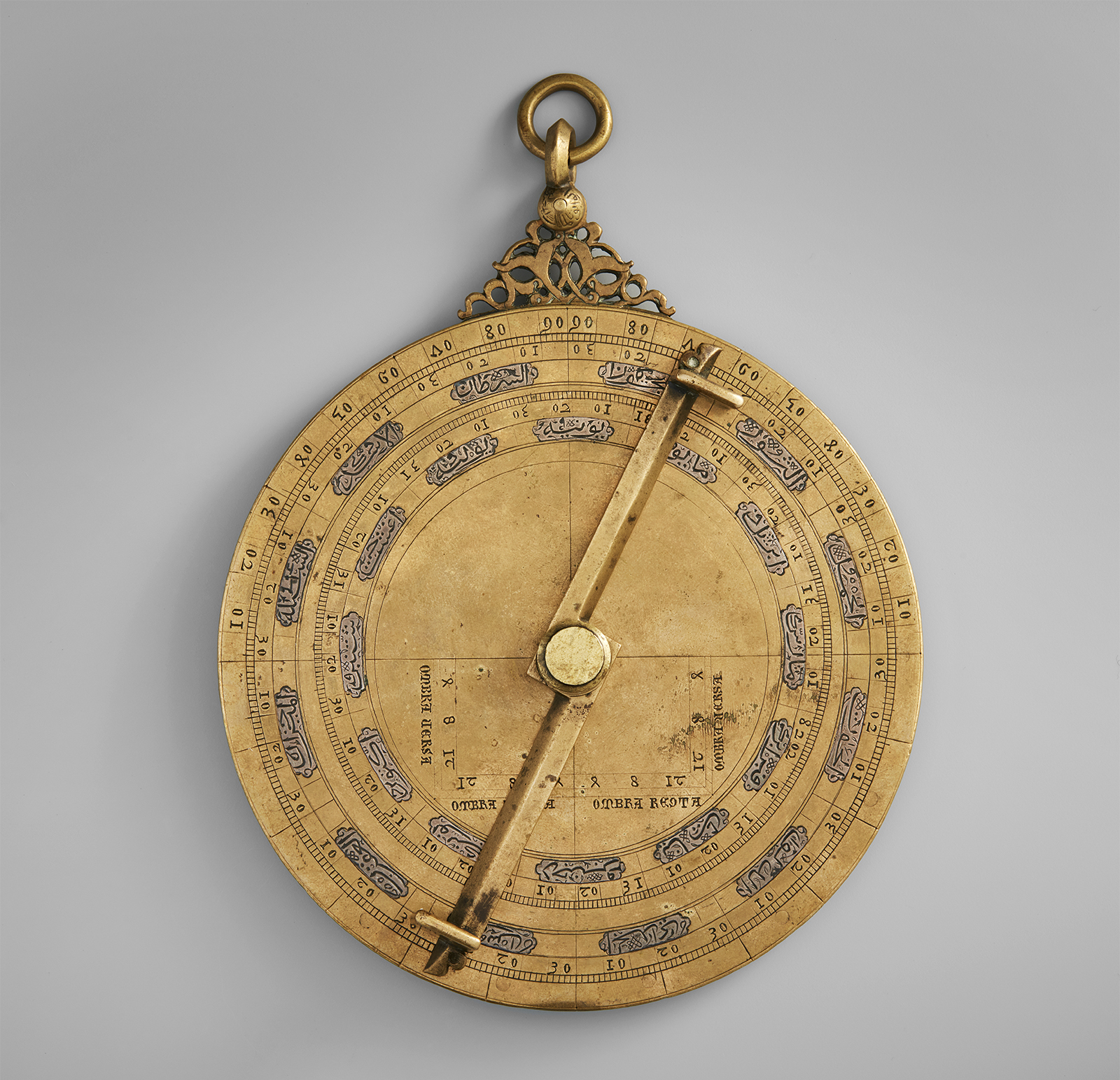
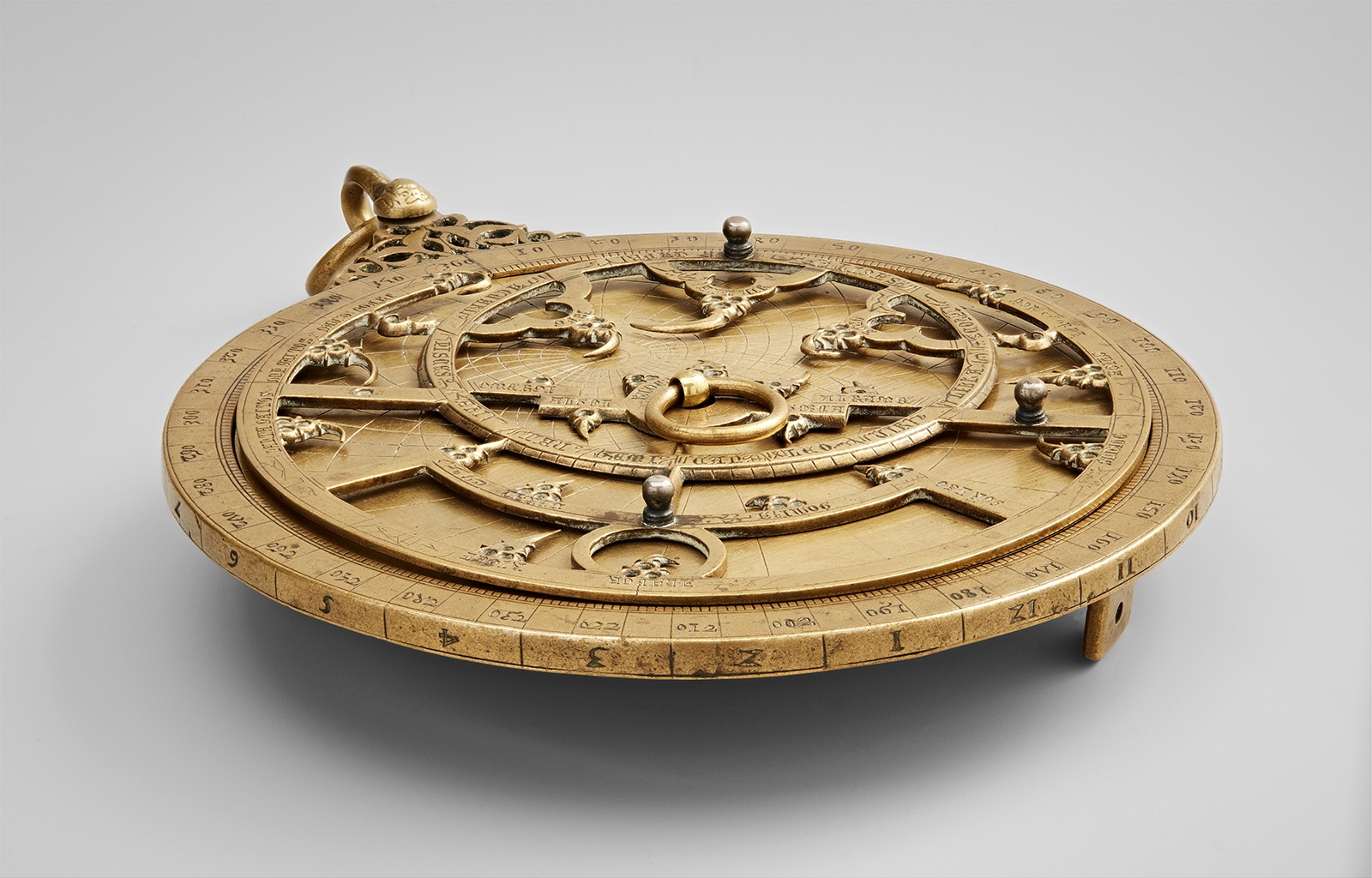
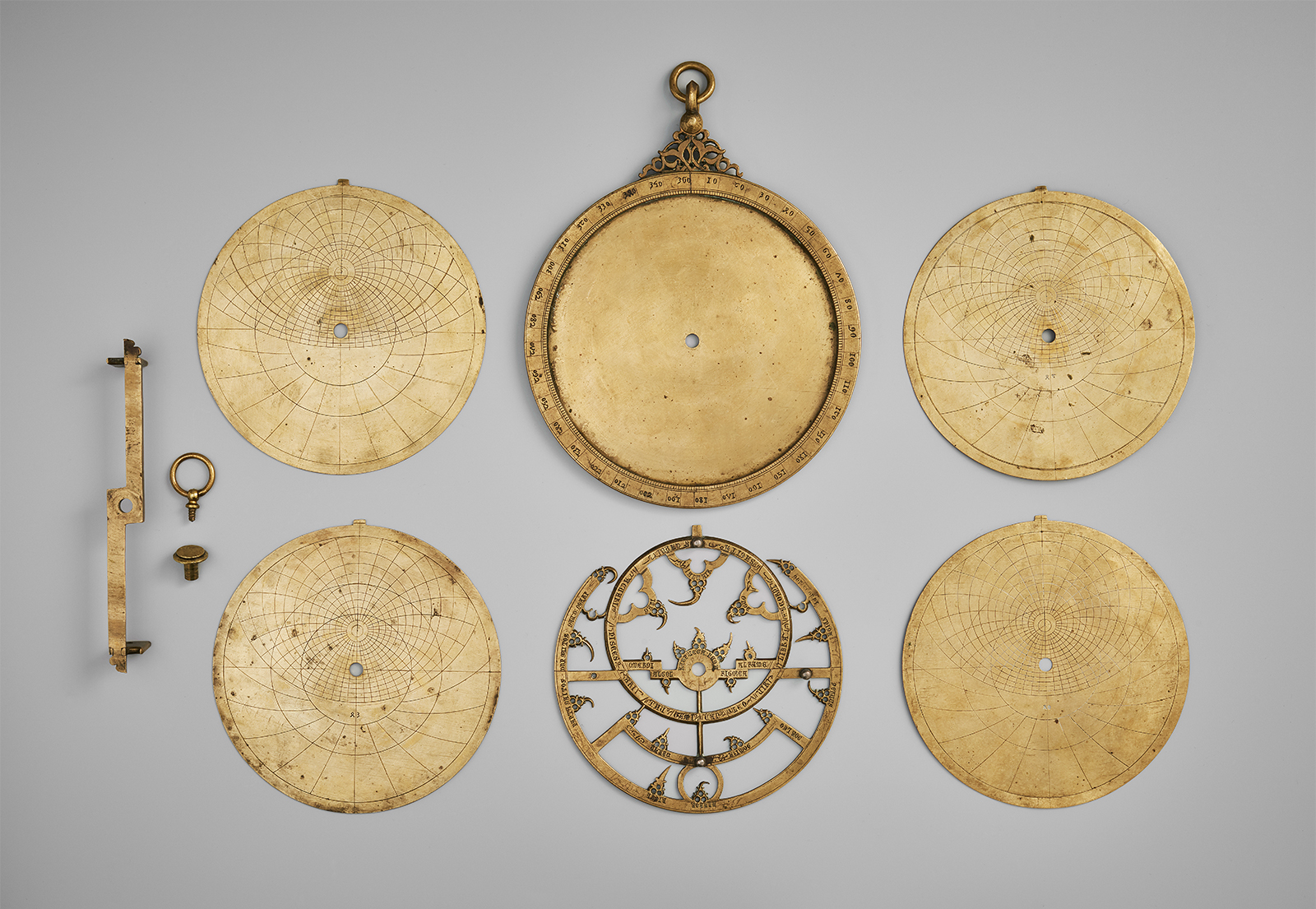
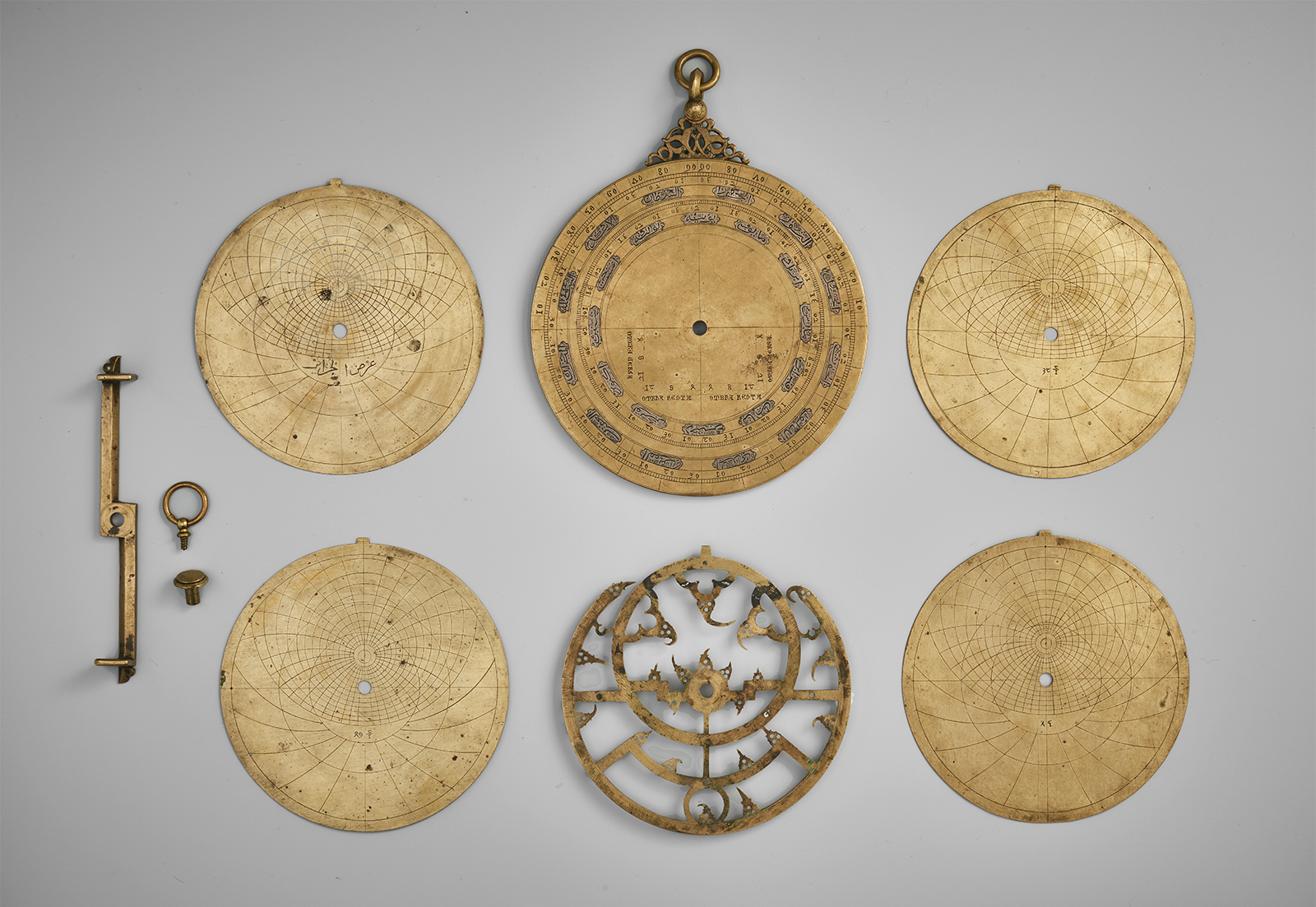
 Pharmacy Jars (Albarello),
Pharmacy Jars (Albarello),